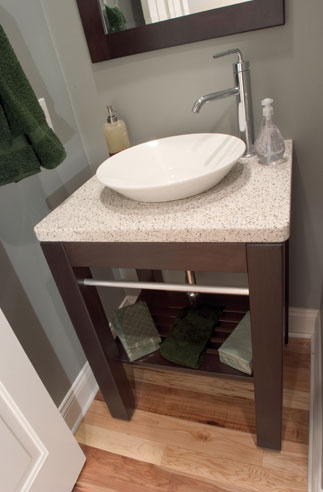 by Kimberly Blackford
by Kimberly Blackford
A favorite pastime as a child was certainly playing house, especially when the weather was perfect enough to spend hours at a time in our outdoor playhouse. It was most fun when the kids down the street came to play with us, yet there was no getting around it – one of the children, who was confined to a wheelchair, simply could not fit inside our tiny plastic home. Instead we played “house” on the patio or got involved in other games we could play together. Although we eagerly adapted to accommodate this friend’s wheelchair, it was bothersome that my friend could not share my special playhouse.

Over a decade later, confined capacities of playhouses everywhere are giving way to universally designed playgrounds and spaces. Universal Design (UD) is largely defined as the process of creating products that are usable by people with the widest possible range of abilities, operating within the widest possible range of situations. Simply put, it is moving beyond making specific things adequately accessible. Now it is about removing barriers completely and seamlessly, creating flowing spaces to be utilized by any person with or without assistance regardless of age or ability. It is making life simpler and more enjoyable for everyone.
Having evolved from the Accessible Design Movement of the 1970’s to The Americans with Disabilities Act of 1990, today’s Universal Design is pushing beyond public spaces and into the floor plans of the average homeowner. It is not necessarily a movement, science, or a unique lifestyle, though those are popular ways of defining UD, rather it is a constantly evolving awareness of the need to provide usability to the greatest extent. The average home in the United States best accommodates the average 6’2” male around 25 years of age. Typically, people have adapted themselves to these ill-fitting environments, but with Universal Design we are able to equip our homes to adapt to our needs instead. Expected life spans are increasing world wide as is the desire for people to age gracefully in their homes. Additionally, the average homeowner wants greater convenience, time efficiency and features that will integrate comfort and security.

It is not complicated to integrate Universal Design in your home plan. You can begin by simply reevaluating your home environment. Think about your every day tasks and question what would make them easier for your family. Do you have a bad back that revolts every time the dishwasher needs emptying? What about when you trip on the front stoop every time you come home after dark?
There are solutions to these frustrations and many more, by incorporating slight design alterations:
- Front loading washers, dryers, and pull out dishwashers reduce strain and increase accessibility
- Efficient lighting: pathways, dedicated task spaces, nightlights, touch lights or rocker switches
- Create a safe sloping walkway that allows seamless movement from driveway to the interior of a home without the need to take a step.
- 5’x 5’ clear entrance space and 36-inch wide doors for uninhibited movement
- Fire alarms/smoke detectors that flash, as well as sound, to ensure awareness regardless of sight or hearing abilities
- Lever handles on doors or faucets and ‘D’ and ‘C’ shaped handles on drawers/pull-outs increase manageability
- Walk-in tubs and barrier free shower floors are safer and expand usability
- Grab bars can be located anywhere in the home without detracting from the décor
- Knee spaces under counters increases comfort and convenience when attending to tasks
- Adjustable heights for any household items (ex: closet rods, counter tops,
 shower heads)
shower heads)
- High color contrasting increases visibility (ex: counter tops from counter edges)
- Ovens and cooktops with front controls prevent the need to reach over hot surfaces during use
These are a few of the many Universal Design concepts readily available for home use. After observing these suggestions and evaluating your home, you will want to speak with your contractor about incorporating Universal Design. Your professional may have further suggestions and can help you contact a User-Expert Designer. A Universal Design User-Expert is someone who is well acquainted with Universal Design and can discuss with you what concepts would likely benefit your lifestyle the most. User-Experts consult regularly with parents of small children, those living with disabilities of varying degrees, elderly involved with the Independent Living Movement, or anyone who uses and benefits from Universal Design. These User-Experts are continually working for the advancement of Universal Design into standard home plans and will be extremely beneficial to your design process.
The most important aspect of Universal Design is flexibility. Remember that technologies are always evolving and your lifestyle is similarly inclined to change at a moment’s notice. Universal Design allows your home to transition with you as life happens rather than forcing you to work around frustrating barriers.
Here are some related articles:
Save this article to:
back to top